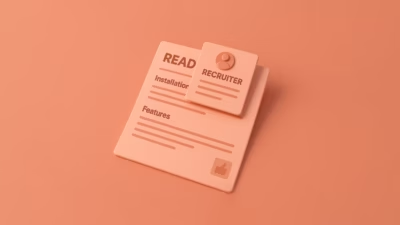You ever scroll through Amazon, spot a product with glowing five-star reviews, and something just feels… off? Too polished. Too many “life-changing!” exclamations for a basic desk lamp. Welcome to the rabbit hole of fake reviews—where sellers pay for stars, bots gush about things they never touched, and our instincts tingle but can’t quite prove it.
Now imagine turning that suspicion into a real project.
Something beginner-friendly, but still smart. Something that lets you play detective with real data, a bit of Python, and the thrill of uncovering lies wrapped in customer praise.
That’s what this project is: analyzing fake reviews on Amazon using text clues. It’s a killer way to build up your data science chops. No deep math. No black-box neural networks. Just solid thinking, basic NLP, and a real-world mystery to solve.
Let’s talk about how to make it happen—and how to actually get something portfolio-worthy out of it.
Why This Project Works
A good beginner data project should check three boxes:
- It uses real data. You’re not stuck with toy datasets or fake CSVs with three columns.
- It asks a genuine question. Not just “what’s the average price?” but something you’d want to know yourself.
- It leaves room to explore. You’re not boxed into one right answer.
This one hits all three. The Amazon reviews dataset is massive, public, and full of rich clues. The question—can we spot fake reviews using only what’s written?—is something people actually care about. And the methods? There are plenty of paths to try.
Plus, it feels a bit sneaky in a good way. You’re not just learning data science. You’re spotting scams with it.
The Dataset: Where the Clues Start
Kaggle has several versions of the Amazon review dataset. Start with something manageable—maybe the one for Electronics or Beauty products. These usually have:
reviewText(the actual review)overall(the rating)reviewTimereviewerIDverified(whether the purchase was verified)helpfulvotes- Maybe even a
labelcolumn for “fake” vs “real” in some versions (that’s gold if you find it)
You don’t need millions of rows to get value. 10,000 reviews is plenty to start seeing patterns.
So What Are You Actually Looking For?
Here’s the fun part. You’re not doing math homework here. You’re a language sleuth. And language leaves fingerprints.
You’ll be digging for text-based signals that a review might be fake. That could include:
- Over-the-top language. Too many exclamation marks, ALL CAPS, phrases like “best purchase ever!!!!”
- Short and vague praise. Reviews that just say “Good product” or “Works fine” with nothing else.
- Repetitive patterns. Multiple reviews using suspiciously similar phrases.
- Mismatch between rating and review. A five-star rating for a review that says “didn’t work.”
It’s subtle stuff. But once you know what to look for, the signs pop up like neon.
Tools You’ll Use (Don’t Worry—You Know These)
This project doesn’t need you to build a classifier from scratch or train a model on the cloud. Keep it simple. You’ll be using:
- Pandas (obviously) to explore and clean
- Matplotlib/Seaborn for simple charts
- NLTK or spaCy for some lightweight NLP
- Scikit-learn for basic vectorization (TF-IDF is enough here)
And optionally:
- WordCloud to make things visual
- TextBlob or VADER for sentiment scores
If you’ve written a couple of Python notebooks before, you can do this.
Phase 1: Get to Know the Data (a.k.a. “What the heck am I looking at?”)
Start by just reading a few reviews. Literally. Manually. Scroll through 20 or 30 randomly selected entries and take notes. What feels off? What feels real? What do the fake-ish ones have in common?
That little detective work up front helps more than any algorithm.
Then dig into:
- Distribution of ratings. Are most 5-stars? Suspicious.
- Number of words per review. Are fake reviews shorter?
- Frequency of extreme language (“amazing,” “terrible,” “worst,” etc.)
- Verified vs non-verified purchases
- Review timestamps—do 50 five-star reviews show up the same day?
You’re not modeling anything yet. You’re learning the shape of the beast.
Tip: Keep a notebook of the weird stuff you find. Real patterns often come from gut feelings first.
Phase 2: Start Quantifying the Weirdness
This is where you turn gut instinct into code.
You might:
- Create a “length” column (word count)
- Count exclamation marks or all-caps words
- Use TF-IDF to find the most overused words across five-star reviews
- Score reviews using sentiment analysis—are fake reviews suspiciously positive?
And here’s the kicker: plot it.
You’d be surprised what a scatterplot of “review length vs rating” or “sentiment vs helpful votes” reveals. It’s how you spot the outliers—the “too good to be true” reviews hiding in plain sight.
Small but powerful move: calculate the ratio of helpful votes to total votes. Real reviews usually get helpful ratings. Fake ones? Not so much.
Phase 3: Basic Modeling (Optional, but Fun)
Okay, say you have some labeled data—maybe the dataset marks reviews as fake or not. Now you can build a simple classifier. Nothing crazy. Just enough to prove your point.
Use:
- TF-IDF for features
- Logistic regression (it’s fast and surprisingly strong)
- Maybe decision trees to see which words/features split things best
Train, test, evaluate. Look at accuracy, precision, recall. But mostly? Look at the confusion matrix. Where does it mess up? Why?
And the real win: check the most important features. If words like “awesome,” “perfect,” and “works great” are top predictors of fakeness… well, you’ve got a story.
How to Wrap This Up as a Portfolio Piece
This part matters more than the code.
You’re not just doing a project. You’re telling a story about it.
Here’s the arc to hit:
- The Hook: “Amazon reviews are full of fake praise. I wanted to see if I could catch them using only the words they wrote.”
- The Data: What you used, how big it was, why it’s credible.
- The Exploration: What patterns popped up early? Any surprises?
- The Features: What text signals did you try to use as clues?
- The Model (optional): What worked? What didn’t?
- The Outcome: What did you learn? Can you spot a fake review now with decent confidence?
Make it skimmable. Add screenshots of charts. Include links to the code and notebook. If you wrote about it on Medium? Even better.
And this matters: end it with a takeaway. Something you got from it.
“I used to just assume five-star meant great. Now I check if the review says anything specific—or just screams GREAT PRODUCT ten times in a row.”
That’s the kind of voice that gets attention.
Final Thought: Data Science Isn’t Always About Big Models
It’s about asking better questions.
Can you catch a liar by how they write? Can you separate signal from noise in a sea of five-star fluff? That’s real data work.
This project teaches you that. And it gives you something better than just another classification model—you get intuition. Pattern recognition. A sense for when the numbers don’t tell the whole story.
And best of all? You get to tell your friends you built a bot detector. Kinda.
Ready to dig into fake reviews? Grab the dataset, open a Jupyter notebook, and just start reading. The clues are there. Your job is to see what others miss.





